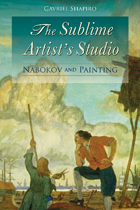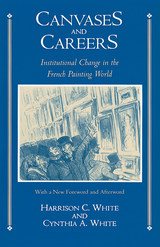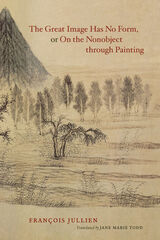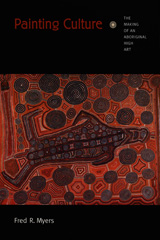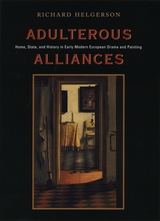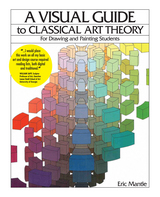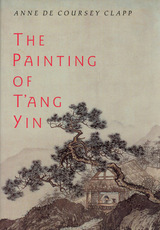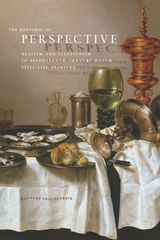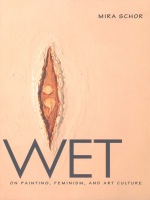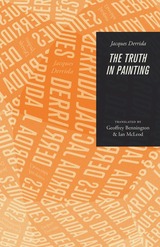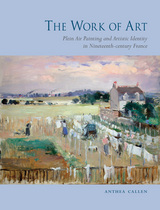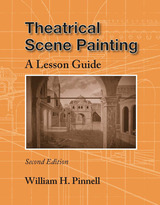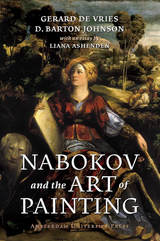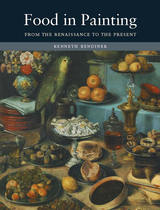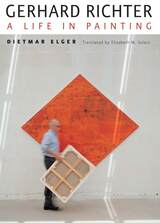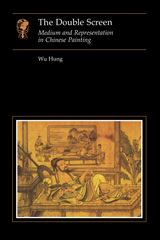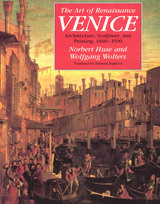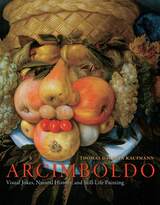PaintingCollection by Cassandra Verhaegen (18 items)Let words paint a picture. Includes the following tags:
1899-1977, 1932-, Aesthetics, Chinese, Art and literature, Art and society, Artists, Architects, Photographers, Bennington, Geoffrey, Buildings, structures, etc, Color, Color Theory, Conceptual, Deconstruction, Derrida, Jacques, Feminism and art, Food, Food in art, Form, Individual Artists, Jullien, François, Lesson Guide, Material culture, Ming-Qing dynasties, 1368-1912, Nabokov, Nabokov, Vladimir Vladimirovich, Netherlands, Painting, Painting, Chinese, Perspective, Pinnell, William, Present, Realism, Realism in art, Regional & Cultural, Representation, Richter, Gerhard, Scene painting, Schor, Mira, Stagecraft & Scenography, Study & Teaching, Technique, Techniques, Todd, Jane Marie, Truth, Visual perception
See More
|
The Sublime Artist's Studio
by Gavriel Shapiro
Northwestern University Press, 2009
In his youth, Vladimir Nabokov aspired to become a landscape artist. Even though he eventually realized that his true vocation was literature, his keen sense of visual detail, nuanced perception of color, and vast knowledge of the fine arts are all manifest in his literary works, which abound with painters and paintings, real and imaginary, as well as with magnificent pictorial imagery rendered in a verbal medium. The relation of the visual arts to Nabokov’s work is the subject of The Sublime Artist’s Studio, an in-depth and detailed study of one of the most significant facets of this modern master’s oeuvre. Gavriel Shapiro pursues his inquiry throughout Nabokov’s literary legacy—poetry, short prose, novels, plays, memoirs, lectures, essays, interviews, and letters. What is the import of Nabokov’s lifelong fascination with the Old Masters? How does landscape function in Nabokov’s writings? What was the author’s relationship to contemporary artists? By addressing these and other questions, while examining Nabokov’s references and allusions to the visual arts and to particular works and artists, Shapiro is able to reveal the centrality of painting to Nabokov’s belles lettres. His book offers a new and promising approach to one of the twentieth century’s most celebrated writers.
1
|
Canvases and Careers
by Harrison C. White and Cynthia A. White
University of Chicago Press, 1993
In the nineteenth century, the Académie des Beaux Arts, and institution of central importance to the artistic life of France for over two hundred years, yielded much of its power to the present system of art distribution, which is dependent upon critics, dealers, and small exhibitions. In Canvases and Careers, Harrison and Cynthia White examine in scrupulous and fascinating detail how and why this shift occurred. Assimilating a wide range of historical and sociological data, the authors argue convincingly that the Academy, by neglecting to address the social and economic conditions of its time, undermined its own ability to maintain authority and control. Originally published in 1965, this ground-breaking work is a classic piece of empirical research in the sociology of art. In this edition, Harrison C. White's new Foreword compares the marketing approaches of two contemporary painters, while Cynthia A. White's new Afterword reviews recent scholarship in the field.
2
|
The Great Image Has No Form, or On the Nonobject through Painting
by François Jullien
translated by Jane Marie Todd University of Chicago Press, 2009
In premodern China, elite painters used imagery not to mirror the world around them, but to evoke unfathomable experience. Considering their art alongside the philosophical traditions that inform it, The Great Image Has No Form explores the “nonobject”—a notion exemplified by paintings that do not seek to represent observable surroundings. François Jullien argues that this nonobjectifying approach stems from the painters’ deeply held belief in a continuum of existence, in which art is not distinct from reality. Contrasting this perspective with the Western notion of art as separate from the world it represents, Jullien investigates the theoretical conditions that allow us to apprehend, isolate, and abstract objects. His comparative method lays bare the assumptions of Chinese and European thought, revitalizing the questions of what painting is, where it comes from, and what it does. Provocative and intellectually vigorous, this sweeping inquiry introduces new ways of thinking about the relationship of art to the ideas in which it is rooted.
3
|
Painting Culture
by Fred R. Myers
series edited by Nicholas Thomas Duke University Press, 2002
Painting Culture tells the complex story of how, over the past three decades, the acrylic "dot" paintings of central Australia were transformed into objects of international high art, eagerly sought by upscale galleries and collectors. Since the early 1970s, Fred R. Myers has studied—often as a participant-observer—the Pintupi, one of several Aboriginal groups who paint the famous acrylic works. Describing their paintings and the complicated cultural issues they raise, Myers looks at how the paintings represent Aboriginal people and their culture and how their heritage is translated into exchangeable values. He tracks the way these paintings become high art as they move outward from indigenous communities through and among other social institutions—the world of dealers, museums, and critics. At the same time, he shows how this change in the status of the acrylic paintings is directly related to the initiative of the painters themselves and their hopes for greater levels of recognition. Painting Culture describes in detail the actual practice of painting, insisting that such a focus is necessary to engage directly with the role of the art in the lives of contemporary Aboriginals. The book includes a unique local art history, a study of the complete corpus of two painters over a two-year period. It also explores the awkward local issues around the valuation and sale of the acrylic paintings, traces the shifting approaches of the Australian government and key organizations such as the Aboriginal Arts Board to the promotion of the work, and describes the early and subsequent phases of the works’ inclusion in major Australian and international exhibitions. Myers provides an account of some of the events related to these exhibits, most notably the Asia Society’s 1988 "Dreamings" show in New York, which was so pivotal in bringing the work to North American notice. He also traces the approaches and concerns of dealers, ranging from semi-tourist outlets in Alice Springs to more prestigious venues in Sydney and Melbourne. With its innovative approach to the transnational circulation of culture, this book will appeal to art historians, as well as those in cultural anthropology, cultural studies, museum studies, and performance studies.
4
|
Adulterous Alliances
by Richard Helgerson
University of Chicago Press, 2000
Shakespeare, Vermeer, Lope de Vega, Molière, and Diderot dont usually keep company with one another. But in this acclaimed book, Richard Helgerson shows that each contributed to a common project of great significance: the artistic promotion of the middle-class home. In a study that stretches over two centuries, Helgerson looks beneath European drama and painting to reveal an unexpected prehistory of modern domesticity.
5
|
A Visual Guide to Classical Art Theory for Drawing and Painting Students
by Eric Mantle
Parkhurst Brothers, Inc., 2009
Eric Mantle presents the basics of classical theory in a clear and concise manner for all beginning drawing and painting students. His book features diagrams that illustrate every concept. Students will see the complexities of color theory and understand how to create the illusion of volume and depth on a 2-dimensional surface. “As an art student,” Professor Mantle recalls, “I was frequently frustrated by instructional books that gave lengthy verbal descriptions of visual concepts and then showed small and/or unclear diagrams of those concepts. As an art teacher, I found that my students would gain a clearer understanding of a visual concept if my verbal explanation was combined with a diagram of that concept.” A Visual Guide to Classical Art Theory is great for both traditional and non-traditional media. Each page, theory and diagram represents a different tool for the artist to use. Through their use, the artist will find an infinite number of solutions. Artists also may use the book to create a trompe-l’oeil effect in graffiti art or the illusion of volume and depth on the computer. A Visual Guide to Art Theory is presented in a unique, non-verbal format that clearly illustrates the effect of perspective on color, light and shade.
6
|
The Painting of T'ang Yin
by Anne De Coursey Clapp
University of Chicago Press, 1991
+This richly illustrated volume documents the art and fully examines the career of the sixteenth-century Chinese master T'ang Yin. One of the four great painters of the middle Ming period, the ambitious T'ang Yin rose above the merchant class into which he was born to become a member of the elite scholarly circle in the city of Suchou. Deprived by accident of his academic degrees and so forced to paint for a living, T'ang Yin became a social anomaly whose style of life cut across the conventions of his time. His experiences throw into sharp relief the realities faced by a Chinese painter who was both elite Confucian scholar and professional painter. Anne De Coursey Clapp's work also explores larger issues of Ming painting raised by the artist's turbulent career. She describes the social and intellectual values exalted in Ming Suchou, its system of patronage, the contrast between the professional and amateur artist, and the formative influence of twelfth-century Sung dynasty styles on Suchou painters. Clapp shows how T'ang Yin's artistic inventions were made in the course of leading the revival of Sung dynasty styles in Suchou: tracing T'ang Yin's early studies of ancient and contemporary masters, she describes how he reworked an antique style, converting it into a vehicle of expression that reached fruition in a long series of fresh and powerful paintings of landscapes and birds-and-flowers. In the process, she revises the distorted version of middle Ming painting written by later Chinese art theorists to justify their own social and artistic values, noting especially the role of art patrons and their effect on artistic production. Clapp analyzes the increasing currency of painting as a means of social exchange in ancient China. In particular, she identifies commemorative painting as a major genre of the later dynasties and explores the role it played in the oeuvres of professional masters with its humanistic implications for the Chinese view of the ideal scholarly man. Her broad view of T'ang Yin's career shows him divided between the professional and amateur camps of his time: in landscape and figural subjects he was aligned with the professionals; in flower subjects with the amateurs. Clap argues that the uneven distribution of styles and genres between this master who was subject to the market, and those who were independent of it, suggests that T'ang deliberately tried to expand the range of his paintings in order to appeal to buyers in the lower educational and social strata. Illustrated by some of T'ang Yin's most celebrated paintings and by some which are published for the first time, her work is of tremendous importance to art, literary, and cultural historians of Ming China. "In this important work, Anne de Coursey Clapp has drawn a clear picture of T'ang Yin's life, patronage relationships, and contribution to the history of Chinese painting. In the person of T'ang Yin, she has chosen an ideal focus around which to examine some of the misleading stereotypes which have distorted our understanding of Chinese painting since the seventeenth century. Marked by analytical clarity and scrupulous scholarship, her work is a welcome addition to the few works in English on individual Chinese artists."—Louise Yuhas, Occidental College
7
|
The Rhetoric of Perspective
by Hanneke Grootenboer
University of Chicago Press, 2005
Perspective determines how we, as viewers, perceive painting. We can convince ourselves that a painting of a bowl of fruit or a man in a room appears to be real by the way these objects are rendered. Likewise, the trick of perspective can prevent us from being absorbed in a scene. Connecting contemporary critical theory with close readings of seventeenth-century Dutch visual culture, The Rhetoric of Perspective puts forth the claim that painting is a form of thinking and that perspective functions as the language of the image. Aided by a stunning full-color gallery, Hanneke Grootenboer proposes a new theory of perspective based on the phenomenological aspects of non-narrative still-life, trompe l'oeil, and anamorphic imagery. Drawing on playful and mesmerizing baroque images, Grootenboer characterizes what she calls their "sophisticated deceit," asserting that painting is more about visual representation than about its supposed objects. Offering an original theory of perspective's impact on pictorial representation, the act of looking, and the understanding of truth in painting, Grootenboer shows how these paintings both question the status of representation and explore the limits and credibility of perception. “An elegant and honourable synthesis.”—Keith Miller, Times Literary Supplement
8
|
Wet
by Mira Schor
Duke University Press, 1997
Taking aim at the mostly male bastion of art theory and criticism, Mira Schor brings a maverick perspective and provocative voice to the issues of contemporary painting, gender representation, and feminist art. Writing from her dual perspective of a practicing painter and art critic, Schor’s writing has been widely read over the past fifteen years in Artforum, Art Journal, Heresies, and M/E/A/N/I/N/G, a journal she coedited. Collected here, these essays challenge established hierarchies of the art world of the 1980s and 1990s and document the intellectual and artistic development that have marked Schor’s own progress as a critic. Bridging the gap between art practice, artwork, and critical theory, Wet includes some of Schor’s most influential essays that have made a significant contribution to debates over essentialism. Articles range from discussions of contemporary women artists Ida Applebroog, Mary Kelly, and the Guerrilla Girls, to "Figure/Ground," an examination of utopian modernism’s fear of the "goo" of painting and femininity. From the provocative "Representations of the Penis," which suggests novel readings of familiar images of masculinity and introduces new ones, to "Appropriated Sexuality," a trenchant analysis of David Salle’s depiction of women, Wet is a fascinating and informative collection. Complemented by over twenty illustrations, the essays in Wet reveal Schor’s remarkable ability to see and to make others see art in a radically new light.
9
|
The Truth in Painting
by Jacques Derrida
translated by Geoffrey Bennington and Ian McLeod University of Chicago Press, 1987
"The four essays in this volume constitute Derrida's most explicit and sustained reflection on the art work as pictorial artifact, a reflection partly by way of philosophical aesthetics (Kant, Heidegger), partly by way of a commentary on art works and art scholarship (Van Gogh, Adami, Titus-Carmel). The illustrations are excellent, and the translators, who clearly see their work as both a rendering and a transformation, add yet another dimension to this richly layered composition. Indispensable to collections emphasizing art criticism and aesthetics."—Alexander Gelley, Library Journal
10
|
The Work of Art
by Anthea Callen
Reaktion Books, 2014
In The Work of Art, Anthea Callen analyzes the self-portraits, portraits of fellow artists, photographs, prints, and studio images of prominent nineteenth-century French Impressionist painters, exploring the emergence of modern artistic identity and its relation to the idea of creative work. Landscape painting in general, she argues, and the “plein air” oil sketch in particular were the key drivers of change in artistic practice in the nineteenth century—leading to the Impressionist revolution. Putting the work of artists from Courbet and Cézanne to Pissaro under a microscope, Callen examines modes of self-representation and painting methods, paying particular attention to the painters’ touch and mark-making. Using innovative methods of analysis, she provides new and intriguing ways of understanding material practice within its historical moment and the cultural meanings it generates. Richly illustrated with 180 color and black-and-white images, The Work of Art offers fresh insights into the development of avant-garde French painting and the concept of the modern artist.
11
|
Theatrical Scene Painting
by William Pinnell
Southern Illinois University Press, 2008
Theatrical Scene Painting: A Lesson Guide, second edition, is a practical guide to scene painting for students and novices, as well as a reference for intermediate scene painters who wish to refresh or supplement their basic skills. Drawing on his extensive teaching and scene-painting experience, William H. Pinnell clarifies and expands on the lessons of the first edition, providing a detailed overview of the fundamentals of traditional scene painting. The guide not only covers the basic tools of the trade and various methods of creating texture on scenery but also includes more advanced techniques for scene making, beginning with stonework, woodwork, and wallpaper before moving on to the more intricate techniques of moldings, paneling, drapery, foliage, shiny metal, perspective illusions, scale transfers, scenic drops, and scrims. Pinnell also includes refinements and embellishments that can lead to the development of personal style without sacrificing the goal of realism and more advanced work. Alternative methods to achieve different effects are also featured. Theatrical Scene Painting: A Lesson Guide was the first book of its kind to provide clear step-by-step instructions in how to paint a wide variety of basic and advanced effects commonly needed for the theater. This new edition clarifies the origins of painting techniques and is supplemented with clearer step-by-step descriptions, new instructional photographs, and drawings that illustrate each major step. This edition also includes additional painting projects and their possible variations, a gallery of nineteen examples of professional scenic works, and an expanded glossary to eliminate confusion in terms. Useful to both self-taught artists and students, each lesson in the guide can be a stand-alone topic or can form the foundation for a student to build skills for increasingly complex techniques. The second edition of Theatrical Scene Painting provides many new essential scene painting projects in a clearer format, broadens the scope of the painting examples, and includes updated methods as well as new lessons. This clear and easily accessible guide gives students the ability to put together recognizable illusions.
12
|
Nabokov and the Art of Painting
by Gerard de Vries, D. Barton Johnson and Liana Ashenden
Amsterdam University Press, 2006
“Sounds have colors and colors have smells.” This sentence in Adais only one of the many moments in Nabokov’s work where he sought to merge the visual into his rich and sensual writing. This lavishly illustrated study is the first to examine the role of the visual arts in Nabokov’s oeuvre and to explore how art deepens the potency of the prominent themes threaded throughout his work. The authors trace the role of art in Nabokov’s life, from his alphabetic chromesthesia—a psychological condition in which letters evoke specific colors—to his training under Marc Chagall’s painting instructor to his deep admiration for Leonardo da Vinci and Hieronymus Bosch. They then examine over 150 references to specific works of art in such novels as Laughter in the Dark, The Real Life of Sebastian Knight, Pnin, Lolita, Ada, and Pale Fire and consider how such references reveal new emotional aspects of Nabokov’s fiction. A fascinating and wholly original study, Nabokov and the Art of Painting will be invaluable reading for scholars and enthusiasts of Nabokov alike.
13
|
Food in Painting
by Kenneth Bendiner
Reaktion Books, 2004
From the hearty meals being devoured by peasants on a Bruegel canvas to the lush and lifelike fruits of a trompe l'oeil, food has enjoyed a central place in painting for centuries. These two great sensory pleasures come together in the sumptuously illustrated Food in Painting. Here Kenneth Bendiner journeys from the Renaissance to the present day—through the works of artists from Rembrandt to Manet to Warhol—to make the case that, though understudied, paintings of food are so important that they should be considered a separate classification of art, a genre unto themselves. Bendiner outlines the history of these paintings, charting changes in both meaning and presentation since the early Renaissance. The sixteenth century saw great innovations in food subjects, but, as Bendiner reveals, it was Dutch food painting of the seventeenth century that created the visual vocabulary still operative today. Alongside paintings that feature food as the central subject, he also considers topics ranging from Renaissance menus to aphrodisiacs to bottled water to the portrayal of dogs at the table—always with an eye towards how the meaning of food imagery is determined by such factors as myth, religion, and social privilege. Bendiner also treats purely symbolic portrayals of food, both as marginal elements in allegorical paintings and as multi-layered sexual references in Surrealist works. Packed full of images of markets, kitchens, pantries, picnics, and tables groaning under the weight of glorious feasts, Food in Painting serves up a delicious helping of luxuriously painted meals certain to win a spot on the shelves of art lovers and gastronomes alike.
14
|
Gerhard Richter
by Dietmar Elger
translated by Elizabeth M. Solaro University of Chicago Press, 2010
Gerhard Richter is one of the most important and influential artists of the post-war era. For decades he has sought innovative ways to make painting more relevant, often through a multifaceted dialogue with photography. Today Richter is most widely recognized for the photo-paintings he made during the 1960s that rely on images culled from mass media and pop culture. Always fascinated with the limits and uncertainties of representation, he has since then produced landscapes, abstractions, glass and mirror constructions, prints, sculptures, and installations.
Though Richter has been known in the United States for quite some time, the highly successful retrospective of his work at the MoMA in 2002 catapulted him to unprecedented fame. Enter noted curator Dietmar Elger, who here presents the first biography of this contemporary artist. Written with full access to Richter and his archives, this fascinating book offers unprecedented insight into his life and work. Elger explores Richter’s childhood in Nazi Germany; his years as a student and mural painter in communist East Germany; his time in the West during the turbulent 1960s and ’70s, when student protests, political strife, and violence tore the Federal Republic of Germany apart; and his rise to international acclaim during the 1980s and beyond.
Richter has always been a difficult personality to parse and the seemingly contradictory strands of his artistic practice have frustrated and sometimes confounded critics. But the extensive interviews on which this book is based disclose a Richter who is far more candid, personal, and vivid than ever before. The result is a book that will be the foundational portrait of this artist for years to come.
15
|
The Double Screen
by Wu Hung
Reaktion Books, 1997
This book contemplates a large problem: what is a traditional Chinese painting? Wu Hung answers this question through a comprehensive analysis of the screen, a major format and a popular pictorial motif in traditional China. With a broad array of examples ranging from the early centuries C.E. to the 1800s, he explores the screen’s position in art – as an important site for artistic imagination, as an illusionary representation on a flat surface, and as an architectural device defining cultural conventions. A screen occupies a space and divides it, supplies an ideal surface for painting, and has been a favourite pictorial image in Chinese art since antiquity. With its diverse roles, the screen has provided Chinese painters with endless opportunities to reinvent their art. The author argues that any understanding of Chinese painting must include discussion of its material forms as well as its intimate connection with cultural context and convention. Thus, The Double Screen offers a powerful non-western perspective on diverse artistic and cultural genres, from portraiture and pictorial narrative to voyeurism and masquerade, and will be invaluable to anyone interested in the history of art and Asian studies as well as to students and specialists in the field.
16
|
The Art of Renaissance Venice
by Norbert Huse and Wolfgang Wolters
translated by Edmund Jephcott University of Chicago Press, 1990
In the first contemporary single-volume survey of the three arts of Venice—painting, sculpture, and architecture—Norbert Huse and Wolfgang Wolters offer an important counterbalance to the traditional orientation toward painting as the city's preeminent art by focusing on architecture as the essential Venetian art. They begin their study in 1460, when Venice was one of the key powers of Italy, and end with the death of Tintoretto in 1594, a period of waning international power. In the process, they define the distinctly Venetian terms by which the city and its culture should be understood. With over three hundred illustrations and an exhaustive bibliography, this volume makes an impressive contribution to art historical scholarship. "The historical aspect of this book is splendid, but where it excels is in its fearless and thought-provoking critical judgements. . . . it will lead both beginners and experts to new joys."—David Ekserdjian, Times Literary Supplement
17
|
Arcimboldo
by Thomas DaCosta Kaufmann
University of Chicago Press, 2010
In Giuseppe Arcimboldo’s most famous paintings, grapes, fish, and even the beaks of birds form human hair. A pear stands in for a man’s chin. Citrus fruits sprout from a tree trunk that doubles as a neck. All sorts of natural phenomena come together on canvas and panel to assemble the strange heads and faces that constitute one of Renaissance art’s most striking oeuvres. The first major study in a generation of the artist behind these remarkable paintings, Arcimboldo tells the singular story of their creation. Drawing on his thirty-five-year engagement with the artist, Thomas DaCosta Kaufmann begins with an overview of Arcimboldo’s life and work, exploring the artist’s early years in sixteenth-century Lombardy, his grounding in Leonardesque traditions, and his tenure as a Habsburg court portraitist in Vienna and Prague. Arcimboldo then trains its focus on the celebrated composite heads, approaching them as visual jokes with serious underpinnings—images that poetically display pictorial wit while conveying an allegorical message. In addition to probing the humanistic, literary, and philosophical dimensions of these pieces, Kaufmann explains that they embody their creator’s continuous engagement with nature painting and natural history. He reveals, in fact, that Arcimboldo painted many more nature studies than scholars have realized—a finding that significantly deepens current interpretations of the composite heads. Demonstrating the previously overlooked importance of these works to natural history and still-life painting, Arcimboldo finally restores the artist’s fantastic visual jokes to their rightful place in the history of both science and art.
18
|
| Click here to go to the beginning. | ||||||||||||||||||
